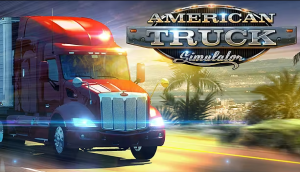
This blog is offered by our friends at The National Transportation Institute. NTI compiles, tracks, and analyzes data on hundreds of attributes of driver pay, wages and benefits at thousands of motor carriers per quarter. Learn more about NTI at driverwages.com.
With competition for drivers heated across nearly all industries and the bullwhip effects of the COVID-19-era economy still lingering, the 2020s have been and will continue to be seminal years for truck driver wages.
Per-mile and hourly base pay has certainly grown, and all factors point to continued momentum for those attributes of a driver’s paycheck. Beyond simply raising pay, however, fleets are also evaluating and implementing structural changes to how — and why — they build their driver compensation plans.
From more frequent adjustments to base pay to recalibrating bonuses, incentives, and benefits, motor carriers and private fleets are striving to find compensation solutions that work to attract new hires and to retain their existing personnel.
An analysis of driver wages and benefits data compiled and reported by The National Transportation Institute reveals five important trends evident across segments, region, and fleet type that should be on every fleet and driver’s radar.
1. Rapidly Climbing Driver Pay for New Entrants
 No trend in 2020, 2021, or 2022 has been more pronounced than the rapid pace of wage growth for newer drivers — those with two years of experience or less. By percentage, the growth in mileage and hourly base pay for drivers with just one year of experience is more than double that of the highest-paid drivers with the most experience and tenure.
No trend in 2020, 2021, or 2022 has been more pronounced than the rapid pace of wage growth for newer drivers — those with two years of experience or less. By percentage, the growth in mileage and hourly base pay for drivers with just one year of experience is more than double that of the highest-paid drivers with the most experience and tenure.
For perspective, drivers with just one year of experience in late 2022 are earning more than the highest paid drivers in late 2018.
Newer drivers expect this type of rapid and frequent wage growth. Fleets must be cognizant of this trend and ensure they offer a pay progression model that meets those expectations.
2. Incentivizing Safety Over Productivity
 This trend is starting to become clearer in NTI data on driver wages and benefits, but increasingly, motor carriers will move toward pay packages that promote safety and move away from pay packages that promote productivity.
This trend is starting to become clearer in NTI data on driver wages and benefits, but increasingly, motor carriers will move toward pay packages that promote safety and move away from pay packages that promote productivity.
Pay by the load, standalone productivity bonuses, and even the predominant mileage pay model will decline in prevalence and instead be replaced with compensation programs that promote safer operating standards, such as beefier and more frequent safety bonuses, hourly pay, and even salary pay.
Productivity will become a personnel management issue, rather than inherent to drivers’ paychecks.
3. Smoothing the Bumps with Guaranteed Driver Pay and Transition Pay
 A frustration long held by professional drivers is inconsistent and lumpy paychecks week to week — particularly for causes outside of their control, such as detention time, weather delays, traffic congestion, deadhead miles, and other unpaid or unproductive time that chips away at their earnings.
A frustration long held by professional drivers is inconsistent and lumpy paychecks week to week — particularly for causes outside of their control, such as detention time, weather delays, traffic congestion, deadhead miles, and other unpaid or unproductive time that chips away at their earnings.
Over the past half-decade, there’s been a pronounced trend of motor carriers offering guaranteed weekly pay options for drivers to help make their paychecks more predictable and to support driver’s week to week through whatever issues may arise on the road.
Nearly 40% of carriers surveyed by The National Transportation Institute in late 2022 are offering guaranteed weekly pay programs. That’s up from just 15% five years ago, in late 2017. Look for this trend to continue.
Also, look for a rise in transition pay incentives in the coming years. Transition pay is either an upfront payment or a weekly paycheck addition that helps bridge gaps in drivers’ pay when they are transitioning into a job at your fleet.
Due to onboarding time and paycheck schedules, drivers transitioning jobs from one fleet to another could go weeks without a full paycheck, leaving them cash strapped and making it difficult to meet their monthly bill obligations.
Transition pay helps solve that issue, and it gives fleets another incentive to market in their recruiting programs. Like guaranteed pay, transition pay helps support drivers and their paychecks by offering consistency, reliability, and preventing early-tenure pay gaps that contribute to turnover in the first 90 days.
4. Weighting Bonuses Toward Retention and Tenure — Not Sign-on

Sign-on bonuses have long been a mainstay in the driver recruiting world. However, they’re not effective tools for long-term retention, and they often can exacerbate churn of short-tenured drivers.
The average amount paid out in sign-on bonuses is more than double that of referral bonuses, but more fleets have been placing a greater emphasis on referrals rather than sign-ons over the past year. The number of fleets offering referral bonuses is now nearly 90% in 2022’s fourth quarter, whereas 70% offer a sign-on bonus.
Also, the dollar amount offered for referral bonuses on average has climbed nearly 10% year over year, while sign-on bonus amounts have grown just 4%.
In lieu of sign-on bonuses, more fleets are evaluating and implementing retention bonuses, tenure pay, and referral bonuses that put a greater emphasis on keeping their existing drivers rather than relying on hefty sign-on bonuses to bring in new hires to replace departures.
5. Meeting Demands for Schedule Flexibility
 Scheduling flexibility may not sound like it’s directly tied to a driver’s paycheck — but it can and should be viewed as an element of a fleet’s driver compensation package and a vital component of recruiting and retention programs.
Scheduling flexibility may not sound like it’s directly tied to a driver’s paycheck — but it can and should be viewed as an element of a fleet’s driver compensation package and a vital component of recruiting and retention programs.
Increasingly, due to both generational shifts in the workforce as well as a greater desire by most workers for better work-life balance, demand for scheduling flexibility is becoming a force that fleets must reckon with, whether by altering routing and shift options to meet expectations for greater work-life balance or putting resources into incentives and bonuses to compensate drivers for the tougher and more undesirable schedules.
For example, for schedules that aren’t desirable (especially for the many fleets that have a seniority-based bid system that consistently leaves less-tenured drivers with the least undesirable schedules), fleets increasingly are building incentive programs that make those schedules more lucrative and help alleviate resentment by drivers working those shifts.
To learn more about the trends impacting driver pay and to gain benchmarking insights into how your fleet’s driver wages and benefits compare to peers and within markets where recruiting and retention are vital, visit NTI’s website, driverwages.com.

Drive My Way matches you with a job based on your preferences like pay, home time, touch level, and more.






 As it stands right now,
As it stands right now, 




 More Money
More Money Depending on how you handle it, driving with your spouse can help you reconnect or can drive you further apart. Here are some tips for drivers who are considering hitting the road with their spouse.
Depending on how you handle it, driving with your spouse can help you reconnect or can drive you further apart. Here are some tips for drivers who are considering hitting the road with their spouse.

 Yes, there are two different tanker endorsements. The “N” endorsement allows drivers to haul a tank trailer. The “X” endorsement also allows a driver to haul a tank trailer with HAZMAT material inside. This means that the “X” endorsement is really just a combination of the “N” and “H” (HAZMAT) endorsements.
Yes, there are two different tanker endorsements. The “N” endorsement allows drivers to haul a tank trailer. The “X” endorsement also allows a driver to haul a tank trailer with HAZMAT material inside. This means that the “X” endorsement is really just a combination of the “N” and “H” (HAZMAT) endorsements. As of right now, all that’s needed to secure an “N” endorsement is to take an additional written knowledge test. This can be done at a testing location in your state. Visit your state’s DMV/BMV for more information on where to test and what information
As of right now, all that’s needed to secure an “N” endorsement is to take an additional written knowledge test. This can be done at a testing location in your state. Visit your state’s DMV/BMV for more information on where to test and what information  More Opportunities
More Opportunities




 Bonuses are a great way to make more money in trucking. Most carriers likely have their own bonus structure, and you should have a copy of the payout information available to you when you start working for them.
Bonuses are a great way to make more money in trucking. Most carriers likely have their own bonus structure, and you should have a copy of the payout information available to you when you start working for them.  Another tip is to keep up with the new systems and processes in the industry. Technology is always changing so make sure you’re doing your part to keep up with the necessary tools and systems that can benefit you in the future. Something that’s optional now might become mandatory to use in the future. Learn it now, and you’ll have an advantage later when you’re applying to higher-paying jobs.
Another tip is to keep up with the new systems and processes in the industry. Technology is always changing so make sure you’re doing your part to keep up with the necessary tools and systems that can benefit you in the future. Something that’s optional now might become mandatory to use in the future. Learn it now, and you’ll have an advantage later when you’re applying to higher-paying jobs. 
 No trend in 2020, 2021, or 2022 has been more pronounced than the rapid pace of
No trend in 2020, 2021, or 2022 has been more pronounced than the rapid pace of  A frustration long held by professional drivers is inconsistent and lumpy paychecks week to week — particularly for causes outside of their control, such as
A frustration long held by professional drivers is inconsistent and lumpy paychecks week to week — particularly for causes outside of their control, such as 
 Scheduling flexibility may not sound like it’s directly tied to a driver’s paycheck — but it can and should be viewed as an element of a fleet’s driver compensation package and a vital component of recruiting and retention programs.
Scheduling flexibility may not sound like it’s directly tied to a driver’s paycheck — but it can and should be viewed as an element of a fleet’s driver compensation package and a vital component of recruiting and retention programs.  When you think of popular video games, titles like Madden, Call of Duty, or Super Mario probably come to mind. What you’re probably not thinking about are games that simulate what it’s like to drive a semi-truck.
When you think of popular video games, titles like Madden, Call of Duty, or Super Mario probably come to mind. What you’re probably not thinking about are games that simulate what it’s like to drive a semi-truck. 
 As a truck driver who’s looking for a new job, there are a ton of factors to consider before making your decision. You’re probably thinking about your preferred range, what you
As a truck driver who’s looking for a new job, there are a ton of factors to consider before making your decision. You’re probably thinking about your preferred range, what you 
